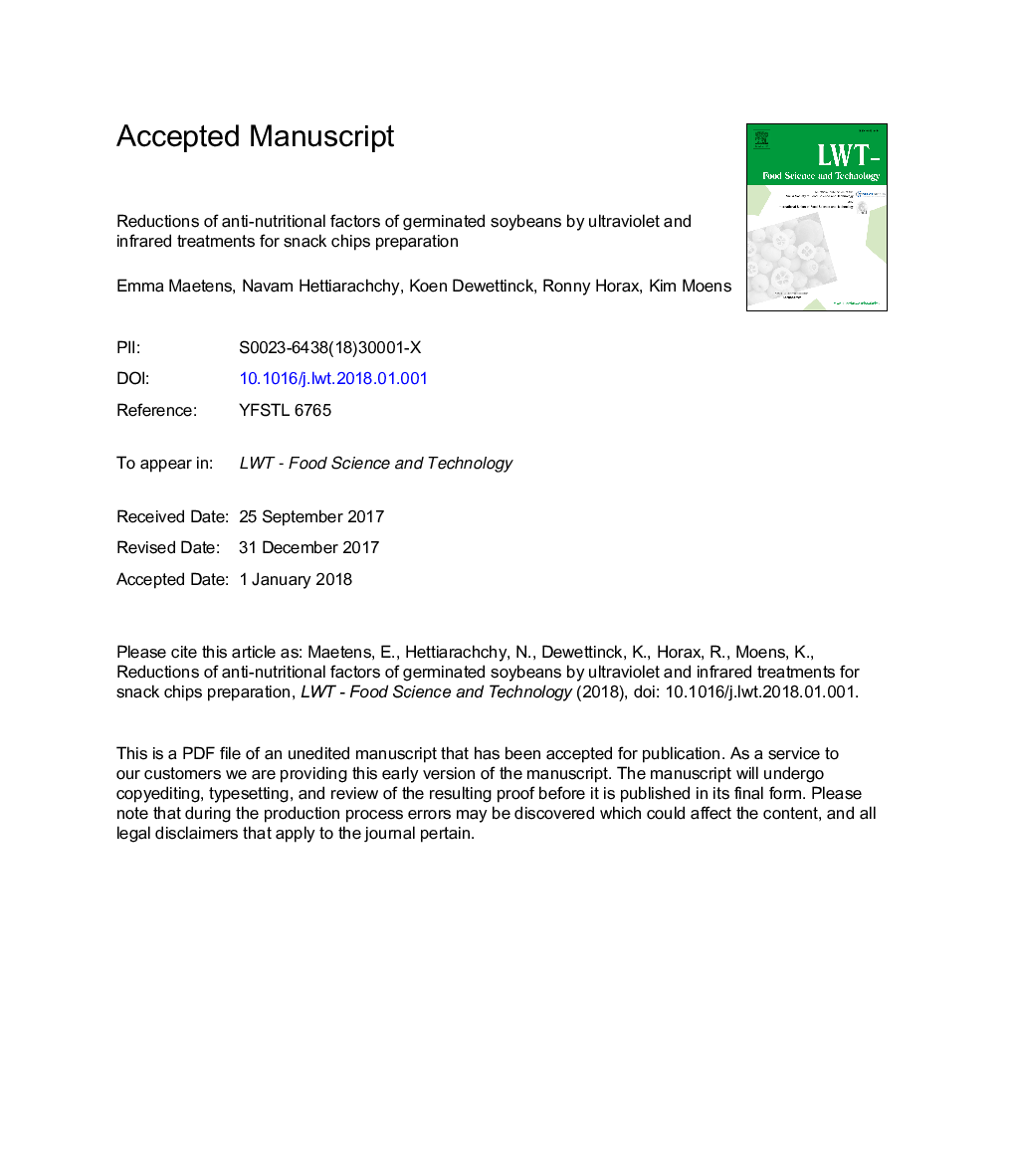| Article ID | Journal | Published Year | Pages | File Type |
|---|---|---|---|---|
| 8891720 | LWT - Food Science and Technology | 2018 | 23 Pages |
Abstract
Ultraviolet (UV) and infrared (IR) treatments were conducted to reduce anti-nutritional factors of 5-day germinated soybean. Exposure time/duration and distance/height to UV/IR were 24/48/72â¯h for UV treatment at 7/17/27â¯cm distance and 1.0/1.5/2.0â¯h for IR treatment at 15/20/25â¯cm distance. These resulted in significant reductions (Pâ¯<â¯.05) of lipoxygenase-1, lipoxygenase-3, and trypsin inhibitor activities to 24, 83, and 50% respectively for UV treatment (17-cm distance, 24-h exposure) and 31, 95, and 98% respectively for IR treatment (15-cm distance, 1.5-h exposure). When combined, as the optimal treatment, the highest reduction was obtained (55, 97, and 99% reduction in lipoxygenase-1, lipoxygenase-3, and trypsin inhibitor activities respectively). Chemical analysis showed that chips made from UV-IR treated germinated soy had moisture, protein, starch, and lipid contents of 4.0, 46, 15, and 11â¯g/100â¯g respectively. These chips also had the lowest anti-nutritional factors due to high reductions in lipoxygenase-1 (62%), lipoxygenase-3 (98%), and trypsin inhibitor activities (100%) and low estimated glycemic index (13). However, the chips had low scores for flavor (3.3), texture (4.9), and overall impression (3.6) for their sensory analysis. Despite low in soybean anti-nutritional factors for these chips, improvement in consumer acceptance is required.
Related Topics
Life Sciences
Agricultural and Biological Sciences
Food Science
Authors
Emma Maetens, Navam Hettiarachchy, Koen Dewettinck, Ronny Horax, Kim Moens,
